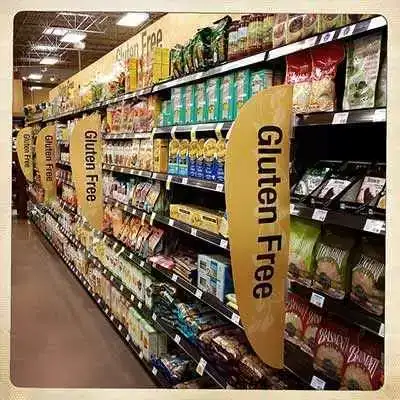
Celiac.com 03/29/2016 - To remain healthy, people with celiac disease must follow a strict gluten-free diet. Good availability of gluten-free foods is critical to this. High prices or limited availability can have a greater impact on celiac patients from lower socioeconomic conditions in regards to their ability to follow a gluten-free treatment diet.
A team of researchers recently set out to assess the availability and cost of gluten-free food in UK supermarkets and via the internet. The researchers included M Burden, PD Mooney, RJ Blanshard, WL White, DR Cambray-Deakin, and DS Sanders. They are variously affiliated with the Academic Department of Gastroenterology at Royal Hallamshire Hospital in Sheffield, UK, and with the University of Sheffield Medical School, Sheffield, UK.
Celiac.com Sponsor (A12):
Their team analyzed data from supermarkets and internet shops delivering to homes in the city of Sheffield, UK, between February and March 2014. They used comprehensive internet searches to identify stores, and analyzed the costs of ten commonly purchased items, and then compared those with standard non-gluten-free alternatives. They also directly measured and compared the number of gluten-free foods available between stores, which were categorized according to previously published work.
None of the budget supermarkets surveyed stocked any gluten-free foods. Premium and full-service supermarkets stocked the greatest gluten-free range, with an average of 22 items (IQR 39, p<0.0001). They found that when a store did stock gluten-free products, those products were, on average, at least four times more expensive than the non-gluten-free alternatives (p<0.0001). Gluten-free products are prevalent online, but half of the ten products surveyed were significantly more expensive than gluten-free equivalents in supermarkets.
These results show that, for Sheffield at least, gluten-free foods are overall readily accessible, but also significantly more expensive than online versions, or comparable non-gluten-free store items. Still, that changes if you're in a low income neighborhood. Gluten-free food access was poor in low-income neighborhoods, as budget supermarkets stocked no gluten-free foods. This poor availability and added cost is likely to impact food availability and gluten-free diet adherence in low-income groups.
These results are for one city in the UK, but they are likely not too different than results would be in the US. Access to gluten-free food becomes more difficult in poorer neighborhoods, and it's always more expensive than non-gluten-free food.
Source:
- Open Original Shared Link








Recommended Comments